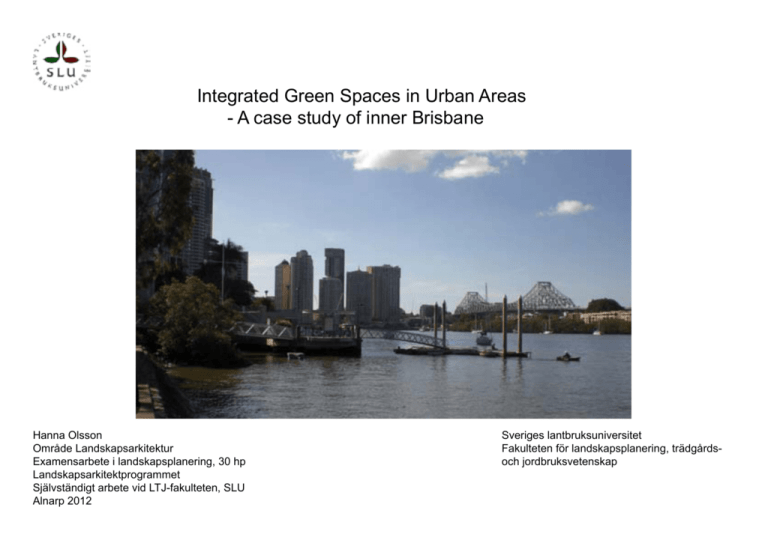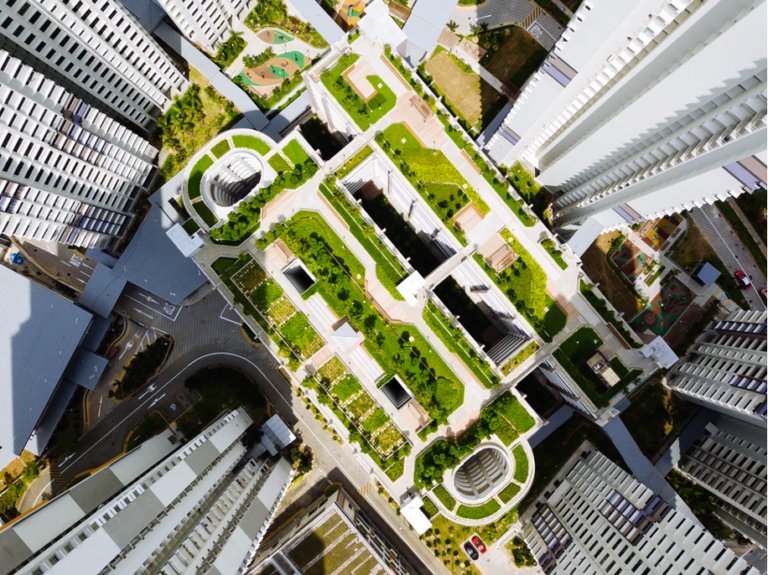How Does Architecture Integrate Principles Of Urban Green Spaces And Parks?

Have you ever noticed how much better you feel when surrounded by lush greenery, even in an urban environment? Luckily, more and more regeneration projects are popping up in cities worldwide, making sure our concrete jungles become more like actual jungles! Let's take a look at seven great examples of how cities are becoming greener:
1. High Line, New York
The High Line is a linear park in New York City that was converted from a disused railway line. This project is a great example of how unused urban spaces can be transformed into beautiful green areas, covering over 2.3 km of Manhattan. The greenery is planted to provide year-round interest, with various flowers and plants blooming at different times.
2. Bosco Verticale, Milan
The Bosco Verticale, or "Vertical Forest," is a pair of residential towers in Milan, Italy. The facade is composed of a series of balcony gardens, providing residents with a green buffer zone from the smog and noise of the city. The towers are home to over 900 trees, 5,000 shrubs, and 11,000 perennials, creating a microclimate that helps reduce energy consumption.
3. Cheonggyecheon, Seoul
Cheonggyecheon used to be an open sewer, but in 2005, it was transformed into an 11 km-long stream and parkland that runs through the heart of Seoul. The project was designed to not only improve the environment but also to bring people back to the area and create an urban oasis. Today, it provides a welcome escape from the hectic city streets, with benches, public art, and even fish swimming in the water!
4. The Goods Line, Sydney
The Goods Line in Sydney is another example of how urban infrastructure can be transformed into green spaces. This one-kilometer park is located on the site of a disused railway line, with a modern design that includes a series of connected spaces for relaxation, picnics, and events.
5. The 606, Chicago
The 606 is a 2.7-mile-long elevated park that runs through several of Chicago's neighborhoods. The project connects several parks and green spaces, providing residents with a safe and accessible route for walking, biking, and jogging. The park also has several outdoor art installations and a variety of programming for all ages.
6. Bay South Garden, Singapore
Bay South Garden is the largest of the three gardens that make up Gardens by the Bay in Singapore. This garden is famous for its "Supertrees," which are vertical gardens that provide shade, collect rainwater, and generate solar power. The garden also has several themed areas, such as the Flower Dome, the Cloud Forest, and the Heritage Gardens, each showcasing different types of plants and flowers.
7. The Lowline, New York
The Lowline is a planned underground park in New York City, set in a disused trolley terminal beneath the Lower East Side. The park will be illuminated by a technology called "remote skylights," which will channel sunlight into the space through fiber optic cables. The park will be a unique and innovative addition to the city's green spaces, and the project is set to open soon.
Other Benefits of Urban Green Spaces
Besides the aesthetic benefits of urban greenery, there are several other reasons why creating green spaces in cities is so important:
1. Improving air quality
Plants absorb carbon dioxide and other pollutants from the air, helping to improve the air quality in urban areas. They also release oxygen, which is essential for human health and wellbeing.
2. Reducing the urban heat island effect
The urban heat island effect is when cities are much hotter than the surrounding countryside. This is caused by the heat-absorbing properties of the materials used in urban development, such as concrete and asphalt. Green spaces provide shade and help cool the air, reducing the urban heat island effect.
3. Encouraging biodiversity
Green spaces provide habitats for a variety of plants and animals, encouraging biodiversity in urban areas. This can include everything from bees and butterflies to small mammals like hedgehogs and squirrels.
Frequently Asked Questions
Why is urban greenery so important?
Urban greenery is important for several reasons. It helps improve air quality, reduces the urban heat island effect, encourages biodiversity, and provides areas for people to relax and connect with nature.
How can I help create more green spaces in my city?
You can get involved in community campaigns to create more green spaces, volunteer with local gardening or conservation organizations, and advocate for green initiatives with your local government representatives.
What are some examples of smaller-scale green spaces I can create at home?
You can create your own green spaces at home, even if you don't have much outdoor space. This can include indoor plants, container gardens on a balcony or windowsill, or even a small vertical garden on a wall. Every little bit helps!
How can I make green spaces more accessible for everyone?
Green spaces should be accessible to everyone, regardless of income or location. This means creating green spaces in all parts of the city, not just in affluent areas. It also means ensuring that green spaces are accessible to people with disabilities, including wheelchair accessibility and sensory-friendly features.
As you can see, urban greenery is about so much more than just aesthetics. Transforming unused urban spaces into green areas can have numerous benefits for our health, wellbeing, and the environment. Let's continue to support these regeneration projects and make our cities greener, one park at a time!




Post a Comment for "How Does Architecture Integrate Principles Of Urban Green Spaces And Parks?"